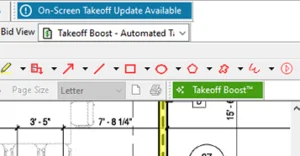If contractors thought 2018 was a record-setting year for the construction industry, they should probably hold on tight for 2019. The latest statistics show that construction is heating up fast as employment hit an 11-year peak in January 2019 with 7.5 million employed—the highest since 2008.
So far, fears of a slowdown have yet to materialize with the Associated General Contractors (AGC) also reporting increases in construction spending. Ken Simonson, the AGC’s chief economist, noted there had been no slowdown in demand for workers or projects. Instead of a slowing market, contractors may begin to feel more pressure to go faster and work smarter.
Construction Outlook is Bright
Just how hot is the market? According to the AGC, year-to-date spending rose nearly 4% for residential construction, 3.4% for private, nonresidential, and 7% for public construction. The industry also saw a rise in average weekly hours in January to 39.9 hours.
In fact, the average unemployment rate for jobseekers with construction experience in January was 6.4%, down from 7.3% in January 2018. The number of workers fell to 638,000 from 707,000 a year earlier. The AGC notes that both figures are the lowest since they began tracking in 2000.
“The pool of unemployed workers with construction experience has virtually evaporated, and everyone in the industry is working longer hours than ever,” said Stephen E. Sandherr, AGC Chief Executive Officer.
Experienced Workers in High Demand
Will the demand for skilled construction labor ease up anytime soon? Probably not, according to an AGC survey released in January. They reported that more contractors expect dollar volume of projects available to bid on to expand and 79% of firms plan to add more employees in 2019.
Nearly the same number of construction firms—78%—reported having trouble filling positions and 68% expected hiring would remain difficult. While construction executives are confident about their prospects in 2019 and plan to hire more workers, they are also concerned about finding and hiring qualified workers to deliver on projects.
An FMI Survey in 2018 found nearly 90% of contractors reporting a shortage of skilled workers and 67% struggling to find supervisory staff. The AGC has predicted the construction industry could add another 300,000 to 500,000 jobs.
Pressure Mounting to Adopt Technology
In our Contractor’s Suite White Paper, we explore how all these numbers add up to a mixed bag of good news/bad news for an industry still struggling with a nagging labor shortage—along with a reputation for being slow to adopt tech tools.
What’s at stake for contractors? The 2017 McKinsey Global Institute (MGI) study noted that even though contractors routinely blow their schedule by 20 percent and their budget by 80 percent, they are only investing 1.5% of value-added technology compared to 3.3% in manufacturing.
Although contractors underspend on technology by 70 percent, new digital tech holds the promise of boosting productivity by as much as 60 percent. Without the right tech tools, contractors could have trouble keeping pace—especially if they are still doing takeoffs with notebooks and colored pencils or chasing down workers on jobsites for their timecards.
How can any contractor keep up with demand without stepping up to new, integrated tech tools? For many firms, a big part of their struggle is related to using software and point solutions that don’t integrate with those programs being used by other departments and functions. The 2018 ConTech Report by JBKnowledge found nearly a third of contractors surveyed—29%—said none of their software solutions integrate. When contractors do have to transfer data between applications, 51% said they do so manually and another 44% said they used spreadsheets.
Investing in Tech to Handle Growth
What are contractors risking when they fail to add new, integrated tech tools? Instead of putting their best foot forward when managing client relationships and the bid management process, the ConTech Report concluded contractors were cobbling together workflows and still relying heavily on spreadsheets, email, and document storage solutions.
No doubt, adding new tech tools could help contractors keep pace and improve productivity and profitability. Experts say investing in technology—from estimating tools to integrated accounting software—can improve speed, accuracy, and efficiency.
For many contractors, starting small when adopting new technology is a less intimidating prospect. For example, giving up paper time cards for automated time-tracking software and apps can be a simple switch. From there, firms can start to incorporate digital collaboration tools to begin the process of providing real-time sharing of everything from digital estimates to equipment logs and punch lists.
With high demand and a tight labor market, contractors are also finding success with integrated accounting software, so they can track productivity and financial data for each project. When contractors can drill into job costs, labor, and quantities, they find it is much easier to keep up with demand.
Are you ready to fast-track productivity with an integrated solution for takeoff, estimating, and project management? Find out what the Contractor’s Suite can do for your construction business – request a free demo now.



